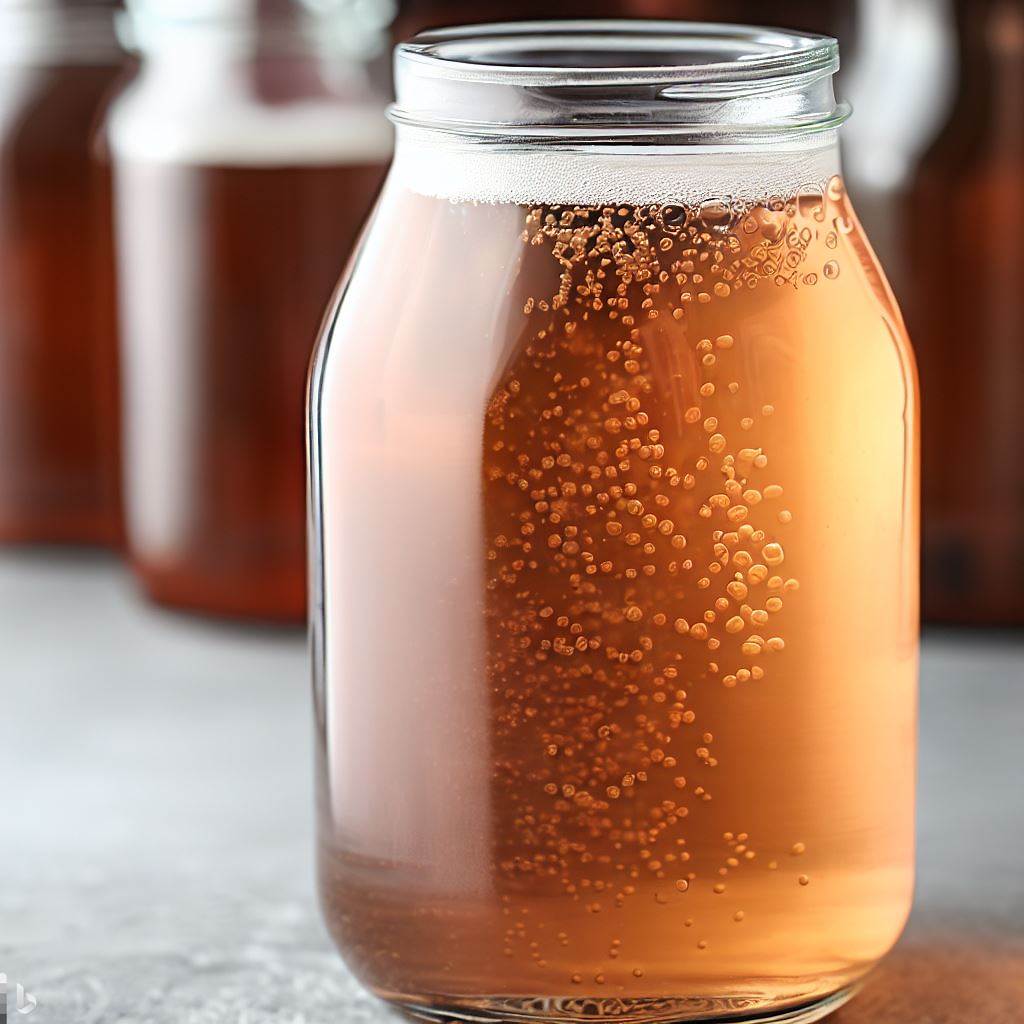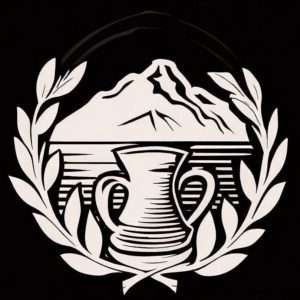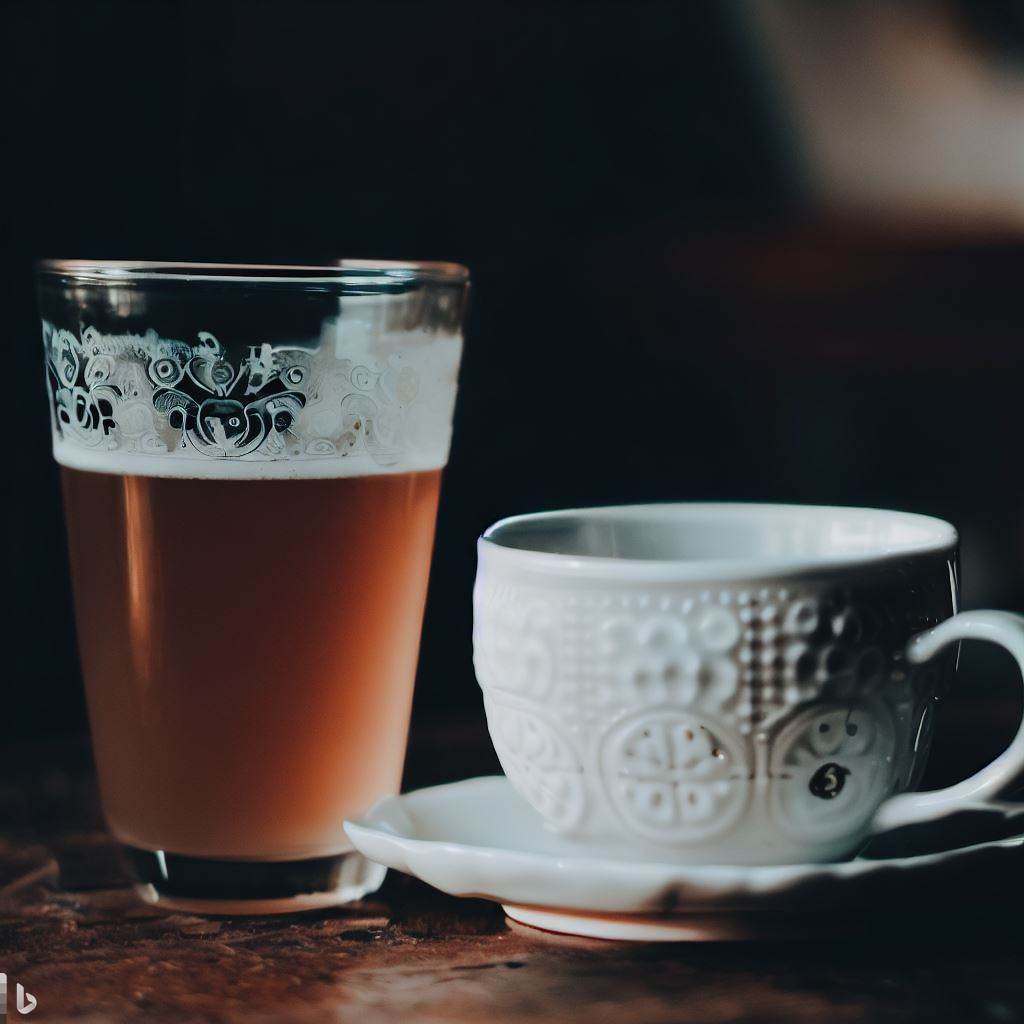As kombucha is brewed at home, enthusiasts often come across the concept of decanting. In this comprehensive guide, we will explore the reasons why decanting is essential during the kombucha brewing process and how it can enhance the overall quality of the final product. Lets go ahead and dive into this Greek Mountain Kombucha blog post on Why Decant Kombucha?
Decanting Kombucha: Enhancing Flavor and Quality: A Comprehensive Guide

What is Decanting Kombucha when Brewing?
Kombucha decanting refers to the process of separating the fermented kombucha liquid from the sediments that accumulate during the brewing process. After the initial fermentation period, where the tea undergoes fermentation with the help of bacteria and yeast, the kombucha is decanted to remove any sediments and achieve a clearer and more refined final product.
Decanting is typically done by carefully pouring the fermented kombucha into bottles or jars, leaving behind the sediments at the bottom of the brewing vessel. This separation of liquid from sediments helps improve the flavor, texture, and appearance of the kombucha. The decanted kombucha can then undergo a secondary fermentation, allowing further carbonation to develop, or it can be consumed as is.
Decanting is an important step in the kombucha brewing process as it helps remove any unwanted particles or impurities, resulting in a more enjoyable and visually appealing beverage. It also allows for better control over the taste and carbonation levels of the final product. Although in fairness some brewers prefer not to decant and to keep the sediment in their kombucha. Which is OK!
Enhanced Flavor and Carbonation
Decanting kombucha serves as a crucial step to achieve the desired flavor profile and carbonation levels. During the fermentation process, the bacteria and yeast present in the kombucha consume the sugars, producing organic acids and carbon dioxide. By decanting, you allow the brew to separate from the yeasty sediment, resulting in a smoother and more refined taste. Furthermore, decanting promotes carbonation development, creating a pleasantly fizzy texture.
Separation of Sediments
As kombucha ferments, it undergoes natural processes that generate sediments at the bottom of the brewing vessel. These sediments consist of yeast particles, residual tea leaves, and other byproducts of fermentation. Decanting enables the separation of these sediments, preventing them from affecting the taste, texture, and appearance of the final kombucha product.
Reduction of Acidity
Kombucha can sometimes become overly acidic during the fermentation process. Decanting allows for the removal of excess acidity by separating the liquid from the acidic sediments. This results in a milder and more enjoyable flavor, making the kombucha more appealing to a wider range of palates.
Clearer and More Aesthetic Brew

Decanting kombucha contributes to the visual appeal of the final product. By removing sediments and any other impurities, the resulting brew appears clearer and more aesthetically pleasing. This is particularly important for those who wish to showcase their homemade kombucha or use it as a base for other flavored variations.
How to Decant Kombucha Properly
Decanting kombucha is a relatively simple process that requires attention to detail. By following these steps, you can ensure a successful and efficient decanting process:
Gather the Necessary Equipment
Before decanting your kombucha, gather the following equipment:
- Glass bottles or jars with tight-fitting lids
- A funnel for easier pouring
- A strainer or cheesecloth to filter out sediments
- Optional: flavorings or fruits for secondary fermentation
Select the Right Time for Decanting
The ideal time to decant kombucha depends on personal preference and the desired level of acidity. Generally, it is recommended to decant the brew after the first fermentation period, which typically lasts 7 to 14 days. However, some individuals prefer a shorter fermentation time for a sweeter taste, while others opt for a longer period for a more tart flavor. Taste testing during the fermentation process can help determine the perfect moment for decanting.
Prepare the Bottles and Containers
Thoroughly clean and sanitize the glass bottles or jars that will be used for decanting. Sterilization is crucial to prevent the growth of unwanted bacteria or mold during the secondary fermentation process. Boiling the bottles or using sanitizing agents specifically designed for brewing purposes are effective methods for achieving a sterile environment.
Decanting Techniques
There are two primary decanting techniques: batch decanting and continuous decanting.
- Batch Decanting:
- Carefully pour the fermented kombucha into the bottles, leaving a small space at the top for carbonation to develop.
- Optional: Add flavorings or fruits for secondary fermentation. Popular choices include ginger, berries, and citrus fruits.
- Seal the bottles with tight-fitting lids to create an airtight environment for carbonation.
- Place the bottles in a dark and warm location, allowing the secondary fermentation to occur for 1 to 7 days, depending on desired carbonation levels.
- Once the secondary fermentation is complete, refrigerate the bottles to halt the carbonation process and enjoy chilled kombucha whenever desired.
- Continuous Decanting:
- Use a brewing vessel equipped with a spigot or a siphon to continuously extract kombucha from the container.
- This method allows you to draw kombucha from the vessel without disturbing the sediments, ensuring a clearer and sediment-free brew.
- Ensure that the container is always topped up with freshly brewed sweetened tea, allowing the fermentation process to continue.
Common Mistakes to Avoid

While decanting kombucha, it’s important to be aware of common mistakes that can affect the quality and taste of the final product. Here are some crucial mistakes to avoid:
Insufficient Fermentation Time
Decanting kombucha too early can result in a sweet and under-fermented brew. Insufficient fermentation time prevents the complete conversion of sugars into organic acids and carbon dioxide, resulting in a less complex flavor and limited carbonation. Patience is key, and tasting the kombucha during the fermentation process will help determine the perfect time for decanting.
Excessive Carbonation
Overcarbonation can lead to bottle explosions or an overly fizzy kombucha, making it difficult to pour and enjoy. It is essential to monitor the secondary fermentation process closely, especially if flavorings or fruits are added. Burping the bottles periodically by slightly opening the lids can release excess pressure and prevent dangerous situations.
Improper Storage Conditions
Kombucha is sensitive to its environment, and improper storage conditions can compromise its quality. After decanting, refrigeration is crucial to halt fermentation and maintain the desired flavor and carbonation levels. Failure to store the kombucha at a cool temperature can lead to continued fermentation, resulting in increased acidity and potential flavor deterioration.
Not Filtering the Brew
Decanting kombucha without filtering it can lead to a less visually appealing brew with residual sediments. Filtering the kombucha before transferring it to the bottles helps achieve a clearer and more professional-looking final product. Using a fine-mesh strainer or cheesecloth can effectively remove the sediments while preserving the flavor and carbonation.
Troubleshooting Decanting Issues
Even with careful attention to the decanting process, issues may arise. Here are some troubleshooting tips for common problems encountered during kombucha decanting:
Flat Kombucha
If your kombucha lacks carbonation after the secondary fermentation, it may need more time to develop. Return the bottles to a warm and dark environment, allowing them to ferment for a few more days. Alternatively, check the seals on the bottles to ensure they are airtight. Insufficiently tight lids can result in carbonation loss.
Mold Formation
The presence of mold on the surface of the kombucha is a clear indication of contamination. If you encounter mold during the decanting process, it is crucial to discard the entire batch to prevent the spread of harmful microorganisms. Mold growth may occur due to improper sterilization of equipment, exposure to contaminated air, or cross-contamination from previous batches. Always maintain proper hygiene and sanitization practices to avoid mold formation.
Excessive Sedimentation
If your decanted kombucha contains excessive sedimentation, it may be a sign of incomplete fermentation or inadequate filtering. Ensure that the kombucha is given enough time to ferment properly and that it is filtered through a fine-mesh strainer or cheesecloth to remove sediments. If the issue persists, consider adjusting the brewing process or seeking advice from experienced kombucha brewers.
Sour or Vinegary Taste
An excessively sour or vinegary taste in your decanted kombucha may indicate overfermentation. This can occur when the kombucha is left to ferment for an extended period, resulting in higher acidity levels. To prevent this, regularly taste the kombucha during fermentation and decant it at the desired level of acidity. Adjusting the brewing time or incorporating flavorings can help balance the taste.
Frequently Asked Questions – Why Decant Kombucha?

Q: How long should I decant my kombucha?
A: The decanting time for kombucha depends on personal preference. Generally, a secondary fermentation period of 1 to 7 days is recommended to achieve desired carbonation levels. Taste testing during the process will help determine the ideal time for decanting.
Q: Can I reuse the sediment left behind after decanting?
A: Yes, you can reuse the sediment, also known as the SCOBY (Symbiotic Culture of Bacteria and Yeast), to start a new batch of kombucha. The SCOBY contains the microorganisms necessary for fermentation. Ensure that the SCOBY is healthy and free from contamination before reusing it.
Q: Is it necessary to refrigerate the kombucha after decanting?
A: Yes, refrigeration is essential to halt the fermentation process and maintain the desired flavor and carbonation levels. Storing the kombucha at a cool temperature slows down the fermentation, ensuring the stability of the brew.
Q: Can I decant flavored kombucha in the same way?
A: Yes, you can decant flavored kombucha in the same way as unflavored kombucha. The decanting process remains the same, regardless of the flavorings or fruits added during the secondary fermentation.
Q: How can I tell if my kombucha is ready for decanting?
A: Taste testing is the best way to determine if your kombucha is ready for decanting. Sample the brew during the fermentation process and decant it when it reaches your desired level of sweetness and acidity.
Conclusion
Decanting kombucha plays a vital role in achieving the desired flavor, carbonation, and appearance of the final brew. By separating the liquid from sediments, decanting enhances the taste, reduces acidity, and ensures a visually appealing product. Remember to follow proper decanting techniques, avoid common mistakes, and troubleshoot any issues that may arise. With these guidelines, you can master the art of kombucha decanting and enjoy high-quality homemade brews.
Thanks for reading this Greek Mountain Kombucha Article on Why Decant Kombucha? Read on to some related articles:







